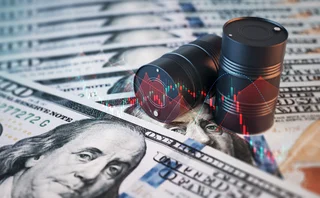Short term, LNG view
Excitement over fast-growing LNG markets shouldn't blind us to the potential risks

In the long term, the excitement in energy is in renewables and demand management (on the latter, see our feature here). That’s where the growth in production will be; that’s where the most interesting and important technical and operational challenges will be. But, in the short term, it’s hard to avoid noticing that gas is where the spotlight is. Liquefied natural gas (LNG), to be specific.
Shale oil has caught the headlines, but it’s arguable that shale gas has had the greater effect on the world. New production has driven the expansion of new markets. Gas is storeable and easily transported by pipeline or tanker. Gas-fired power stations are cleaner than coal, especially in particulate terms (and particulates matter even to governments determined not to care about climate change); gas generation is dispatchable at short notice.
Almost three-quarters of world LNG production goes to Asian consumers. Market logic would therefore seem to demand a thriving derivatives market based on an Asian benchmark. So far, market logic hasn’t got one. There have been previous false starts, but this year could be different; in our LNG feature we look at the reasons why. The hedging market is booming, with products based on the S&P Global Platts Japan Korea Marker benchmark particularly popular, and market participants optimistic about further growth. At present, lack of JKM liquidity at the long end means long-term hedgers are still using Henry Hub, but that’s a poor hedge, and JKM – already preferred at the short end – should soon take over the long end as well.
There are a lot of assumptions underlying the development of the US natural gas business that need to be examined closely and cynically, and so far they have not been
At the other end of the supply chain, in the US home of shale gas, meanwhile, the risks seem less tractable. Shale gas’s benefits have been hiding its drawbacks; confident that new shale rigs can quickly been brought on line, storage operators have been letting stockpiles draw down to new lows in winter, and have been slow to rebuild them this summer. As our feature points out, this is like so many other financial market developments of recent years: it will be fine, until it suddenly isn’t.
There are a lot of assumptions underlying the development of the US natural gas business that need to be examined closely and cynically, and so far they have not been. The result, when the assumptions turn out not to hold, could be a far more turbulent natural gas market than anyone is expecting. Let’s hope natural gas risk managers are ready to ride it when it arrives.
More on Gas/LNG
Energy Risk Europe Leaders’ Network: geopolitical risk
Energy Risk’s European Leaders’ Network had its first meeting in November to discuss the risks posed to energy firms by recent geopolitical developments
Energy Risk US Leaders’ Network: tackling volatility
Energy Risk’s inaugural US Leaders’ Network convened in Houston in October to discuss risk management challenges caused by geopolitical upheaval, policy uncertainty and volatility
LNG trading strategies set to change amid major market shifts
The global LNG market is on the brink of significant changes set to alter trading dynamics and market behaviour, say analysts
Energy Risk at 30: Learning from the past
Energy Risk looks back at the seminal events and developments that have shaped today’s energy markets
Natural gas/LNG house of the year: ENGIE
Energy Risk Awards 2025: Energy firm signs a string of innovative deals in established and fledgling gas markets
Natural gas/LNG house of the year: ENGIE
ENGIE continues to expand its services to better serve firms in Apac dealing with the challenges of energy risk management and supply
Market shrugs off EC’s plan to change gas benchmark
Dutch TTF prices unmoved, as market participants say they are “not taking it seriously”
Natural gas/LNG house of the year: Engie
Energy Risk Awards 2021: In a volatile market Engie continued to grow its gas and asset management businesses







